After losing two nights of sleep over shrinking potato yields, Kevin Grass rolled out of bed at 3 a.m. on a late-September morning and began crunching numbers to figure out how he’s going to cover this year’s outstanding farm bills.
“We’re in trouble,” said Kevin as he steered a 15-ton potato harvester forward while jotting down notes on the crop and monitoring his crew — tasks he’s come to master simultaneously over the last 30 years. “Our yields are way off.”
Grass owns and operates Grass Farms with his father — Duane Grass — in Mars Hill, a town that sits less than a mile from the Canadian border in northeast Aroostook County. Bright autumn colors coupled with pockets of dark green pines line the county this time of year, but ongoing drought has cast a shadow over the peaking fall foliage. The potato harvest, which began in late August, will come to an end in the next couple of weeks.
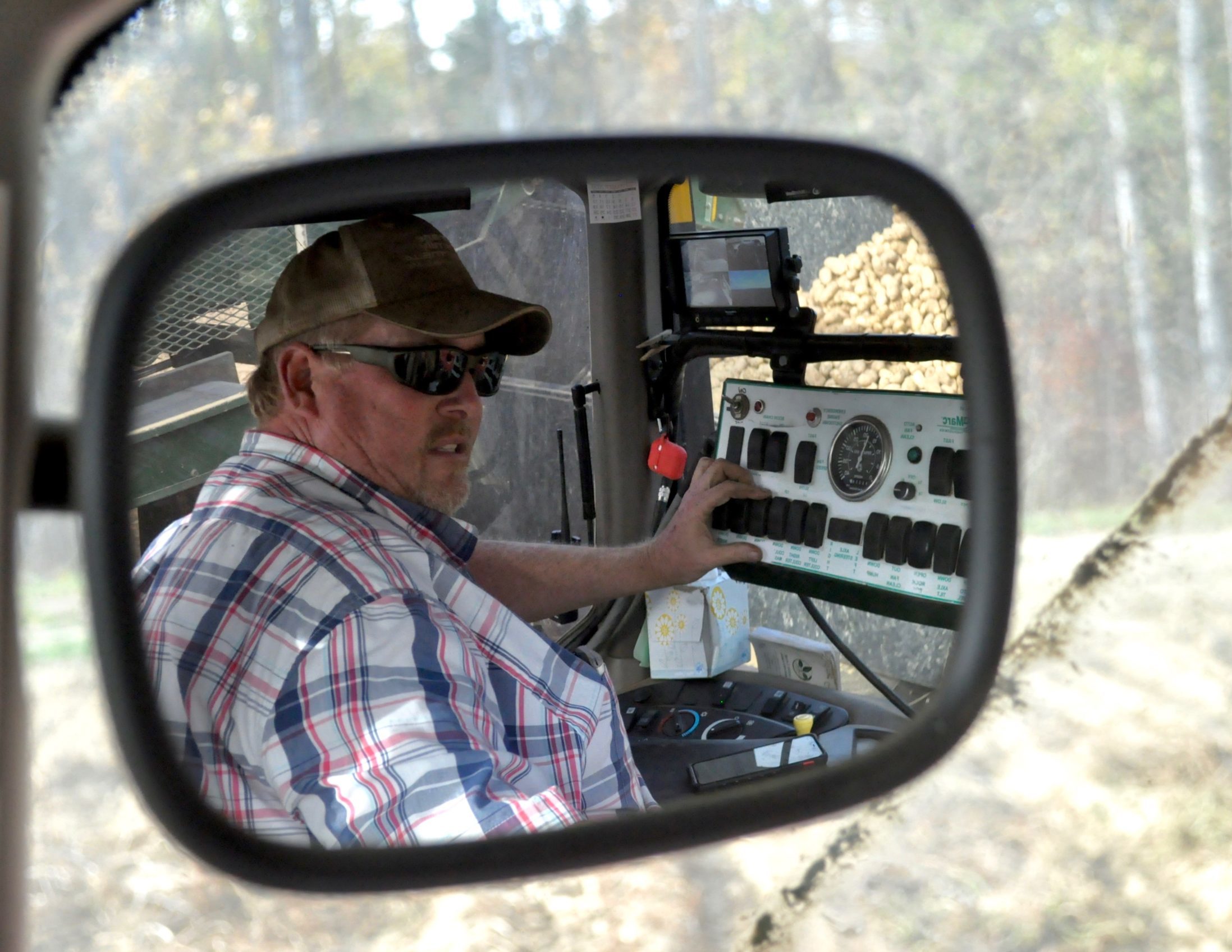
Potato yields at Grass Farms are down a third this year, and its seasoned farmers point to the drought as the driving force. Rain is essential for non-irrigated farms like the Grass’ because they rely on the frequency of Mother Nature’s rain spells to bring the 200 acres of potatoes they farm to market.
“I’ve seen dry spells but nothing like this,” said Duane Grass, 77, a third-generation potato farmer who has worked the land for 57 years. “We’ve had almost no rain since the 15th of May.”
Mid-May became a significant period for farmers and scientists this year, as temperatures warmed and rainfall remained absent. Warmer temperatures allowed water to evaporate more quickly, preventing essential groundwater recharge and causing streamflow levels to drop below normal in June.
“Above-normal temperatures and far-below-normal precip(itation) — that combination is particularly bad for agriculture,” said Nicholas Stasulis, a Maine-based water scientist with the United States Geological Survey. Scientists coined this combination of conditions as a “flash drought,” which kicked in during mid-June, according to Stasulis.
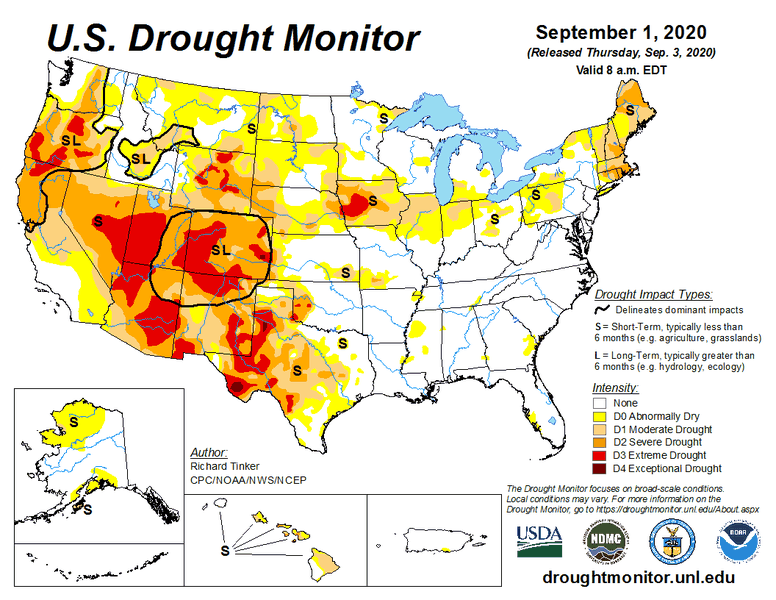
An exceptionally dry September led the United States Department of Agriculture to declare Aroostook County a drought disaster area late last month. The designation unlocked funds for emergency farm loans aimed at relieving costs brought on by natural disasters when yields are reduced by 30 percent or more — the norm for potato farms across Aroostook County this year.
The drought has generational farmers and industry experts in Maine wondering whether it is becoming necessary to invest in irrigation systems. Others have increased their focus on soil health.
“I hope that this doesn’t become the new norm. If it does, then we become dryland farming and then it’s damned near impossible,” said Kevin Grass. “Then you have to irrigate and we just don’t have enough water sources around here to do that.”
‘One of the lightest crops we’ve ever dug’
In Blaine, a few miles from Grass Farms, Gregg Garrison has been experimenting with irrigation. Garrison, a second-generation potato farmer, operates Double G Farm with his father, Wayne, and two children — Olivia Hammond and Spencer Garrison — who are poised to take over the operation one day.

Double G Farms irrigates 10 percent of the 800 acres of potatoes it grows.
“In a normal year, we wouldn’t see as much of a difference between the (irrigated potatoes) and the non-irrigated just because we normally would still have rain. But this year we see a huge difference because we haven’t had the rain,” said Hammond.
Where there typically are 10 potatoes from each non-irrigated plant, Double G now sees only seven — or 30 percent fewer potatoes overall. The irrigated plants are yielding an average of 10 potatoes per plant this year, and their size and shape is better, according to Hammond.
“This is probably the most severe drought in all my years since ’88, and Dad says the same and he’s farmed since ’65,” said Gregg Garrison. “We’re in uncharted territory to the extent that this is probably going to be one of the lightest crops we’ve ever dug.”
Despite the strain, Gregg Garrison said Double G will be able to fulfill the contract it made in the spring with global distributor McCain Potatoes and national producer Pineland Farms Potato Company, which turn the potatoes into fast-food staples like fries and potato chips.
But between the drought and the economic impact of the coronavirus, the farm has no surplus of potatoes, which means there will be no extra revenue this year to invest back into the business.
Minimizing risk as a form of insurance
Warm days, cool nights and heavy soils that retain lots of moisture all support Maine’s iconic potato industry in Aroostook County. As rain becomes more sparse and temperatures increase, Maine’s soil won’t retain the same moisture levels.
“I think you’re going to continue to see more growers be interested and want to implement irrigation as a risk-management tool,” said Don Flannery, executive director of the Maine Potato Board. “Maine has been in the potato business a long while, and it’s because of our climate.”
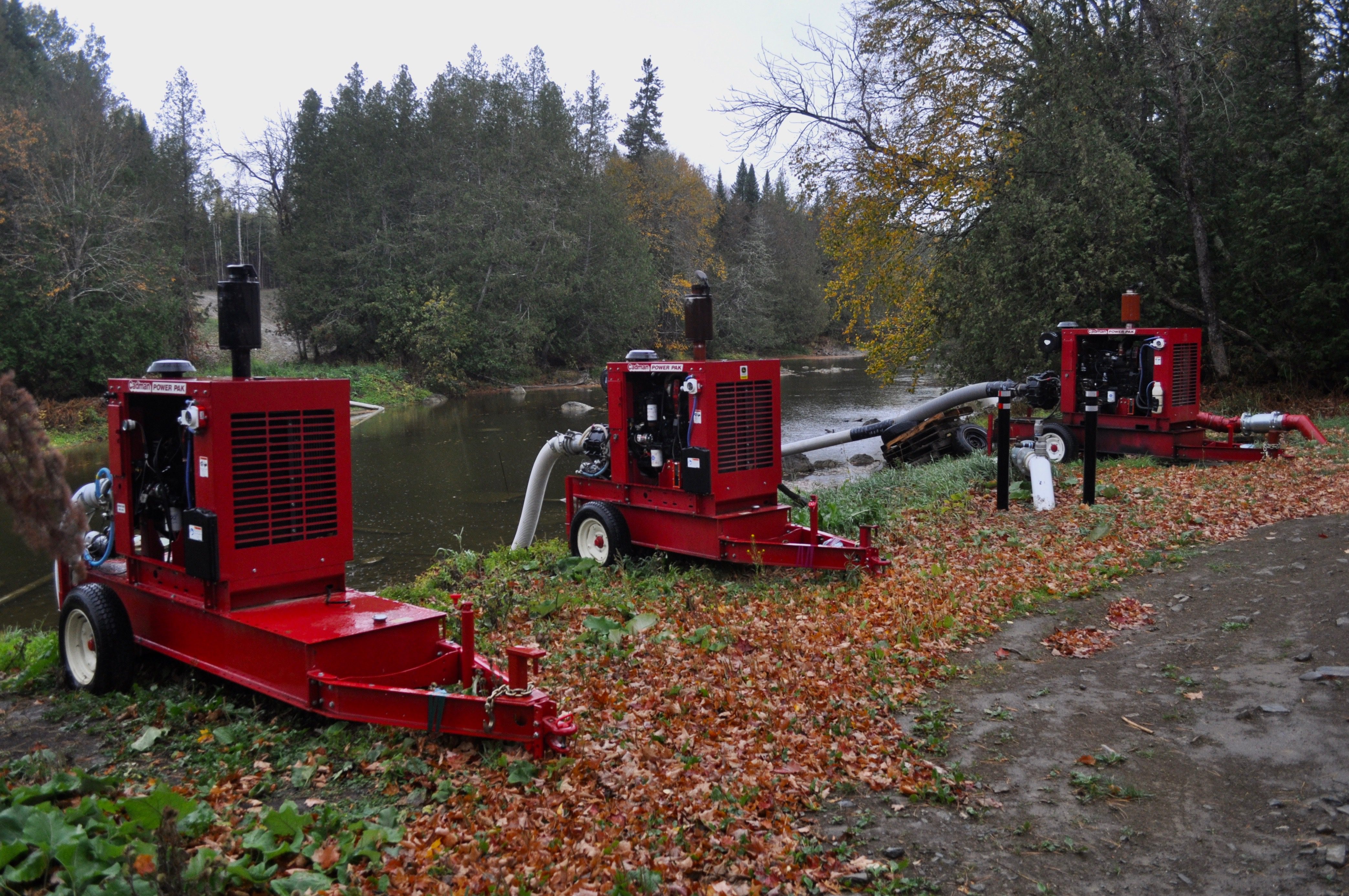
Drier and hotter trends have government regulators and industry advocates focused on building resiliency in the face of agricultural sustainability challenges.
“(Farmers are) all well aware that things are getting more difficult and relying on natural precipitation just isn’t as reliable as it used to be, when their dad and grandfather were farming,” said Bill Sheehan, director of the Department of Environmental Protection’s office in Aroostook County. “They’re subject to the whims of the weather.”
When you’re a farmer and it’s 90 degrees out and your crop is suffering — you almost feel like a magician when you can put water on it and make it survive and be profitable.”
— Brent Grass, co-owner of B D Grass & Sons farm
The USDA’s Natural Resources Conservation Services (NRCS) provides a cost-share program — the Environmental Quality Incentives Program — that helps farmers invest in farm resources, equipment and technology that encourage sustainable practices.
B D Grass & Sons is a family farm in Blaine that began investing in irrigation infrastructure through the NRCS cost-sharing program in the early 1990s. Brent Grass and his brother, Neil, farm 2,500 acres of potatoes a year, irrigate 40 percent of their land, and prioritize buying farms near healthy water sources.
“It has expanded a lot in probably the last 10 years. A lot of growers have been jumping on the bandwagon, spending lots of money,” said Brent Grass.
The brothers feel lucky they have irrigation, “but it’s not free,” said Brent Grass, who has co-owned the farm with his brother since 1997. “It takes government help because the stuff is so expensive.”
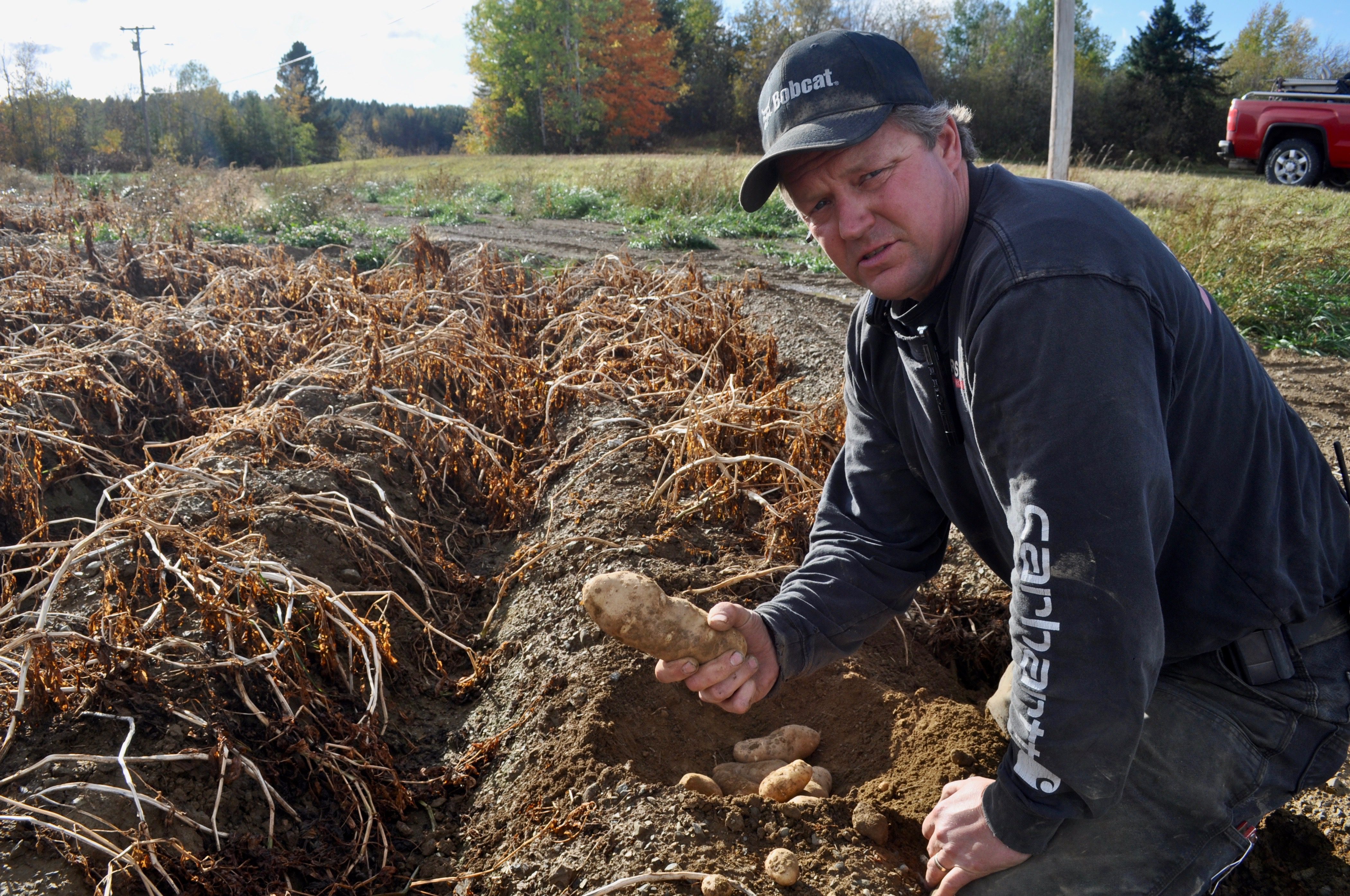
Their irrigation infrastructure includes 10 miles of underground irrigation pipe and 11 center pivot watering systems that sell for roughly $100,000 apiece and cost $1,500 an acre in initial infrastructure costs, including laying piping and pumping water. This means it costs Brent and Neil Grass roughly $1.5 million to install irrigation machinery for 40 percent of their potato crop before factoring in variable costs like fuel to power the system.
“When you’re a farmer and it’s 90 degrees out and your crop is suffering — you almost feel like a magician when you can put water on it and make it survive and be profitable. It’s probably the greatest feeling. It’s amazing,” said Brent Grass.
Even with state-of-the-art irrigation, B D Grass & Sons anticipates $1.2 million in losses because of a 30 percent drop in potato yields. While the irrigated crop produces 60 to 85 percent more potatoes for B D Grass & Sons, Brent Grass said, not all years require the heavy irrigation needed in 2020.
“It’s not like we’re growing potatoes in a desert every year. There’s years we don’t use it and that’s what makes it hard to make the investment. You might go two or three years and not utilize it hardly at all. You buy car insurance — you’re not planning on getting into an accident, either. It’s similar to that,” said Brent Grass.
Water investments and soil improvements
Investing in crop irrigation and cultivating healthy, drought-resistant soil are two ways farmers in Aroostook County, like the Garrisons, are combating the worsening impacts of severe drought and prolonged heat.
“After this season, it’s going to be on the top of the list of a lot of farmers to have irrigation for more of their acreage,” said Sheehan of Maine’s Department of Environmental Protection. “Figuring out where that water (will) come from in a year like 2020 is going to be a big challenge.”
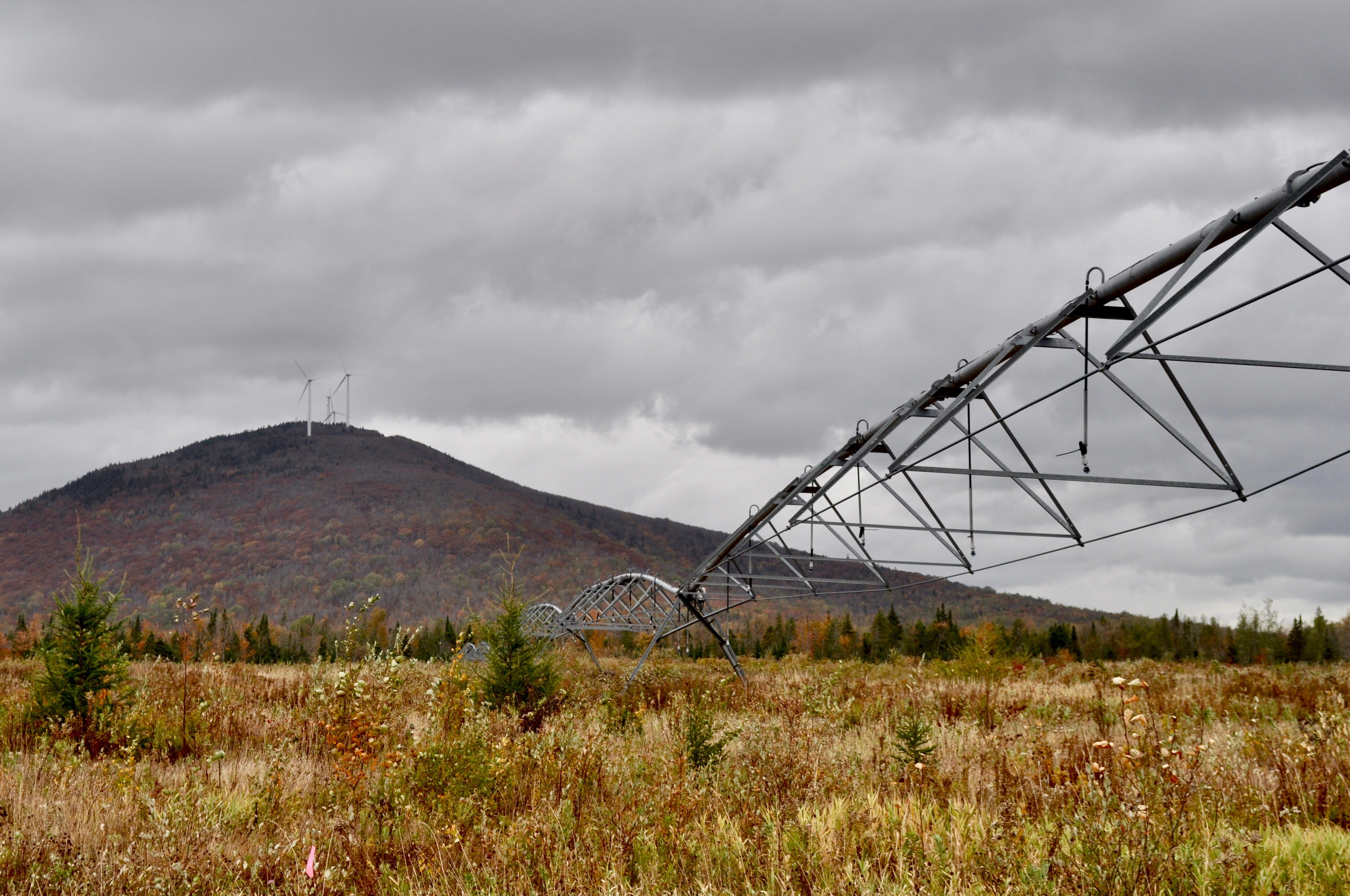
Sheehan is working with Maine’s Department of Agriculture, Conservation and Forestry to reinstate the Maine Agricultural Water Management Board, which was active during Gov. John Baldacci’s administration but deteriorated under Gov. Paul LePage because no members were appointed to the board. State statute mandates that the Department of Agriculture commissioner appoint five members — including one potato producer — and the governor appoint three members.
“After this year we see how important it is to have the board up and considering these big policy issues,” said Sheehan.
After this season, it’s going to be on the top of the list of a lot of farmers to have irrigation for more of their acreage. Figuring out where that water (will) come from in a year like 2020 is going to be a big challenge.”
— Bill Sheehan, director of the Department of Environmental Protection’s Aroostook County office
The Water Management Board will be reinstated by the end of the year at the earliest, according to Nancy McBrady, the bureau of agriculture director for Maine’s Department of Agriculture, Conservation and Forestry.
“It’s taken longer than we’d like, but we’re gonna get this back,” said McBrady. “Certainly healthy soil needs consistent water and putting those pieces all together is going to be a challenge.”
The importance of having accessible water for potato farming was a central issue Sheehan and farmers went back and forth on this year. Small and mid-sized streams reached critical lows this summer, which prompted the Department of Environmental Protection to step in and restrict water withdrawals.
Dwindling surface and groundwater levels dictate how much water farmers can pull from the environment. While Sheehan and his colleague restricted withdrawals, they didn’t fully enforce low flow rules as a favor to farmers who were already struggling.
“If they had enforced it, they would have put us all out of business this year. They didn’t, but they have the power to,” said Brent Grass of B D Grass & Sons.
“This isn’t corporate farming, this is family farms after generations and I understand the stress you feel when you’re the third or fourth generation and things aren’t going well,” said Sheehan. “I’m sympathetic to that but at the same time we need to have water and healthy streams, and keep the fish swimming. We can’t just suck them dry.”
Rain deficits boost reliance on wells
Ideal potato farming conditions call for an inch of rain a week to gradually water potatoes that are growing. This year farmers are working against major rainfall deficits with parts of the state facing 10 inches less of rainfall, according to Stasuli.
“Being 10 inches behind where we should be is pretty significant, so that’s a concern,” said Stasuli. “We need a significant amount of rain and it can’t happen all at once. Getting 10 inches in two days isn’t going to help us. We need prolonged rain over an extended amount of time and that’s kind of what we’re hoping for.”
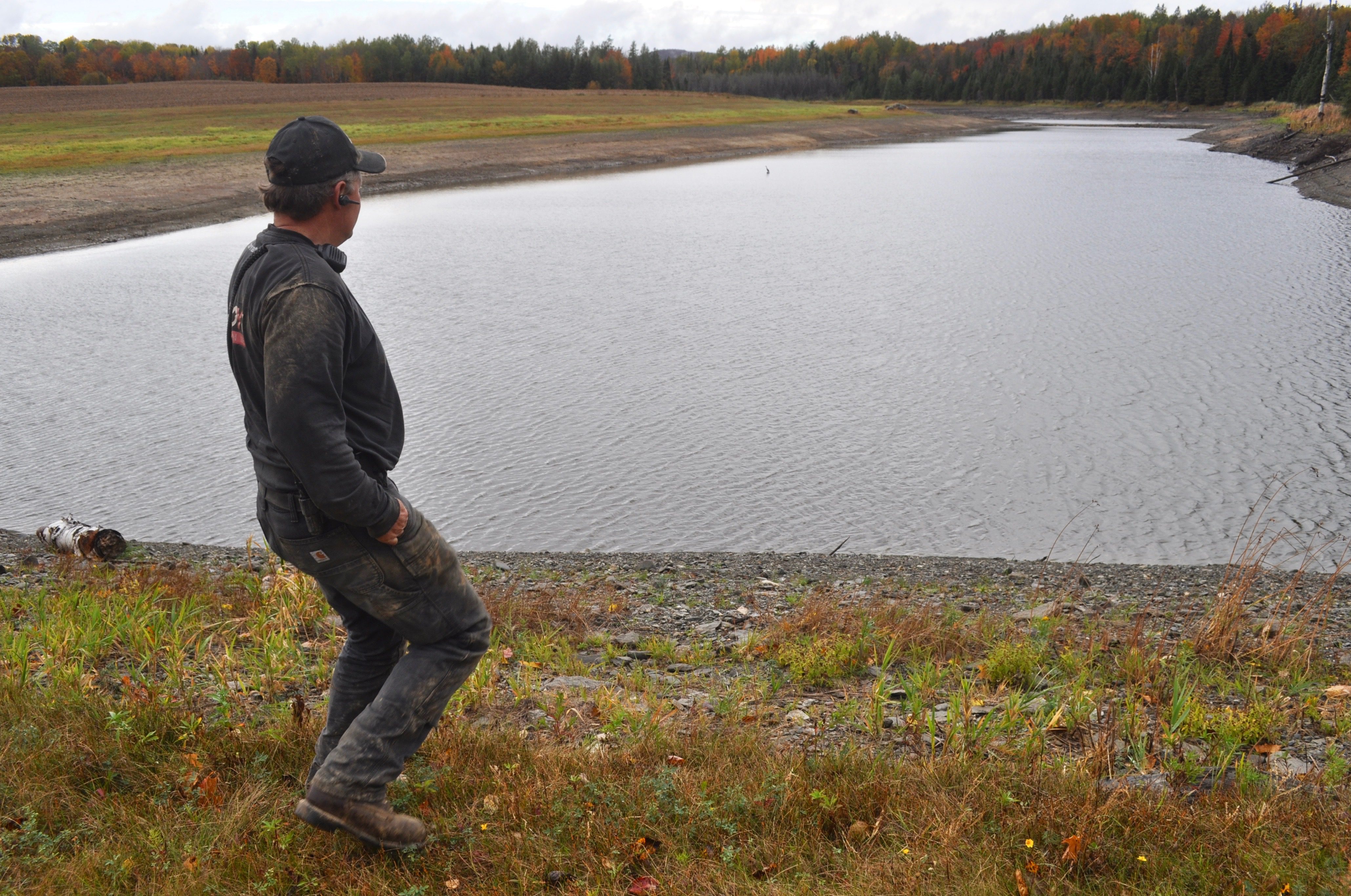
The gradual rainfall needed to recharge groundwater levels that feed wells, ponds, streams and rivers is key because violent rainstorms lead to flooding and water quickly rolling off slippery surfaces instead of slowly infiltrating through the bedrock into underground aquifers. The recharge is especially important to farmers who pull from these water sources to irrigate fields and run businesses.
This year, Pineland Farms had to drill two new wells on its property to meet water demands, and B D Grass & Sons had to use a well as a water source for the first time.
Double G Farms, which had to dig out one of the two streams it uses as water sources on the farm this year, is among hundreds of people in Aroostook County whose wells went dry this year.
Jim Watson is one of a handful of well drillers who reported an upswing in servicing dry wells, making numerous calls to farmers, including Hammond of Double G Farms.
“This year’s the first year in my career that I’ve been able to pick and choose the work I want to do — first time in my life — because of the numbers,” said Watson, who is a fourth-generation Aroostook County well driller. Watson said if the extreme drought continues through October or November without any significant rain, this would be the worst he’s seen.
‘Born with potato dirt in your blood’
Further up the supply chain, farmers like the Hemphill family have escaped the impacts of this year’s particularly dry season, but their continued success hinges on consistent rainfall.
“We got rain when we needed it,” said Greg Hemphill, a fifth-generation Presque Isle potato farmer who co-owns Hemphill Farms with his wife and two of his four sons.
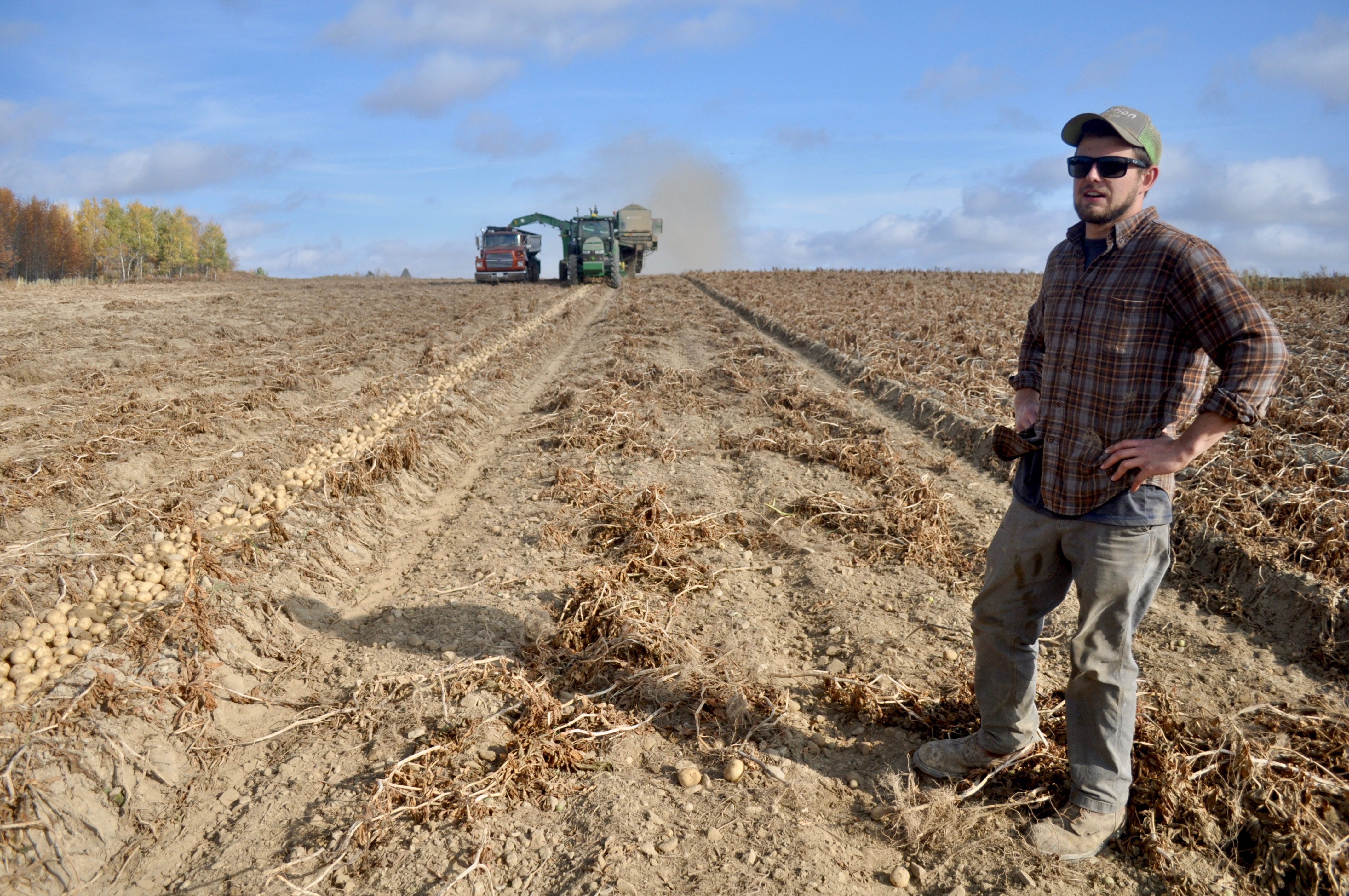
Hemphill hands have worked the original family farm in Presque Isle since 1920 — when Hemphill’s great grandfather, Roland S. Hemphill, bought it. Today, Hemphill Farms grows and sells seed potatoes, the backbone of the processed potato business.
“The seed is the key to everything else. If you don’t plant good quality seed, then you can’t expect a very good product,” said Kevin Grass of Grass Farms, who relies on seed potatoes to fulfill his contracts.
“It’s what starts their growing season, buying seed here,” said Garrett Hemphill, Greg’s oldest son.
There’s always risks, I guess, with farming. It could be (the) coronavirus. It could be a drought. It could be both at the same time. We’re always on guard.”
— Garrett Hemphill, co-owner of Hemphill Farms
Farmers in Aroostook County and down the seaboard from Pennsylvania to Florida, and up into Canada, buy Hemphill seed potatoes each season to replant, harvest and sell the final product to potato processors and make a profit. The Hemphills fully rely on rain for the 350 acres of seed potatoes they produce each season.
Yields are down 10 percent this fall from the drought, but every seed potato the Hemphills harvested this season has been spoken for.
This fall has been a “complete 180” from the spring, Garrett Hemphill said, when buyers were reluctant to purchase seed potatoes because the processors were uncertain whether people would still be eating out or buying fast food as the economy closed down from the pandemic. This left 20,000 pounds of Hemphill potatoes without a home last March.
With markets down, unemployment skyrocketing and people struggling to make ends meet, the Hemphills decided to give some seed potatoes away by inviting people to come to the farm and pick up bags for themselves.
“There’s always risks, I guess, with farming,” said Garrett Hemphill. “It could be (the) coronavirus. It could be a drought. It could be both at the same time. We’re always on guard.”
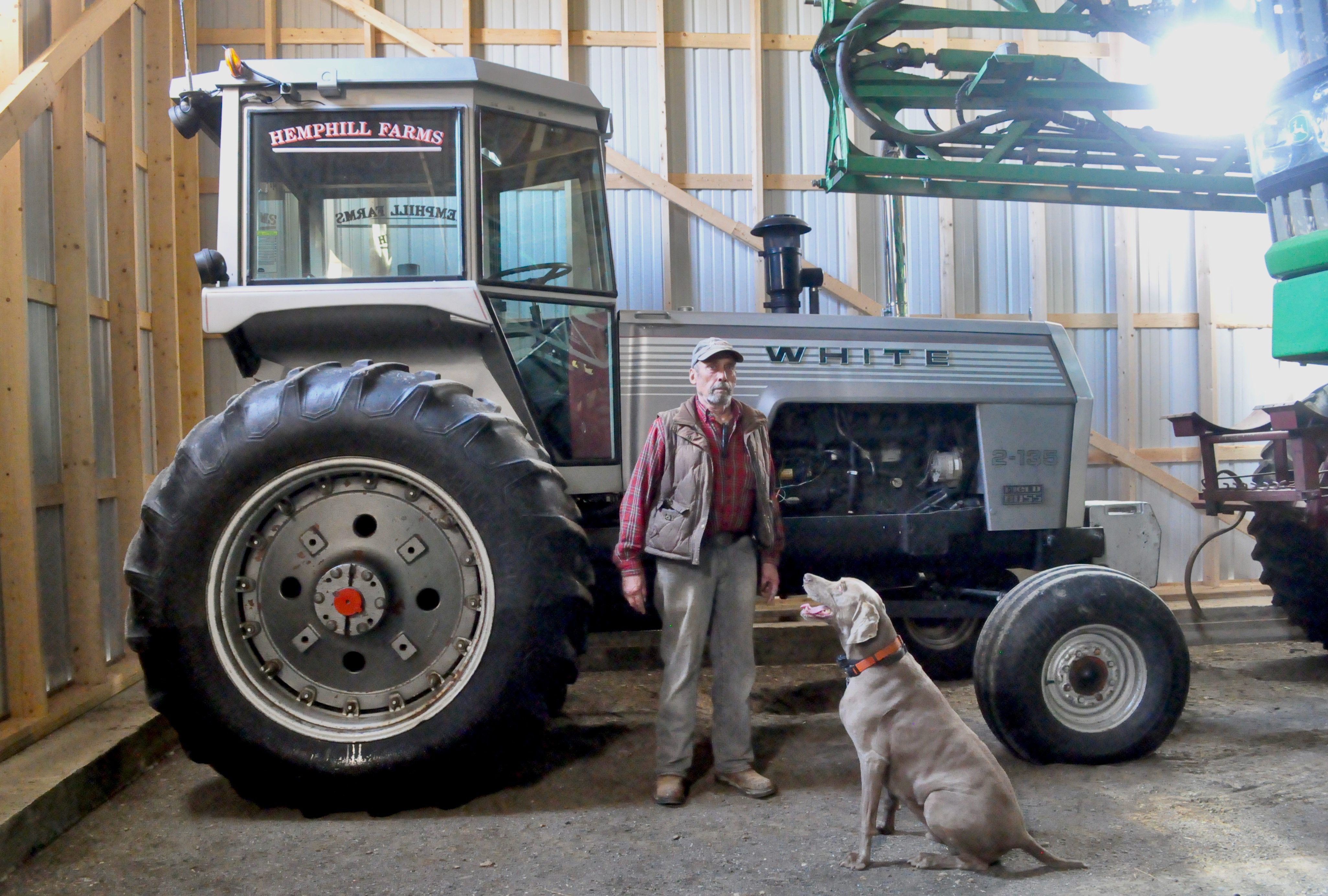
This tradition of perseverance has allowed Hemphill Farms to grow 10 times in size over the past century. Judd Hemphill, now 75, fought for future Hemphills to have a hand in sowing their own seeds in Presque Isle.
“I was fortunate enough to be able to keep the farm (when) a lot of farmers didn’t,” said Judd Hemphill. “I’m glad that I kept the farm to pass it on.”
Judd Hemphill retired in 2011 but still helps in some capacity every day. His dad urged him to go into any field other than agriculture, but his farming roots ran deep.
“(It’s) the only thing I wanted to do,” said Judd Hemphill. “You’re born with potato dirt in your blood.”
The younger Hemphills share Judd’s dedication, but after a season affected by both a drought and a pandemic, they’re curious about the future.
“It makes me wonder what’s gonna happen next year,” said Greg Hemphill.







